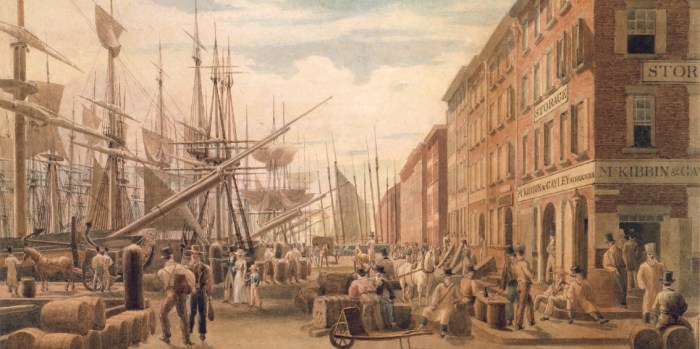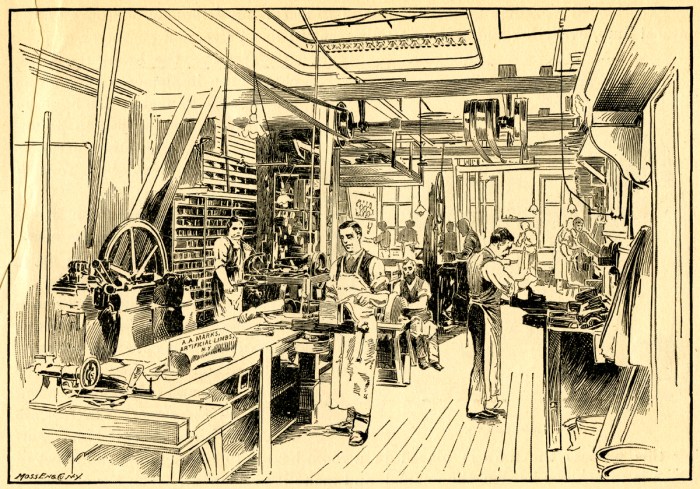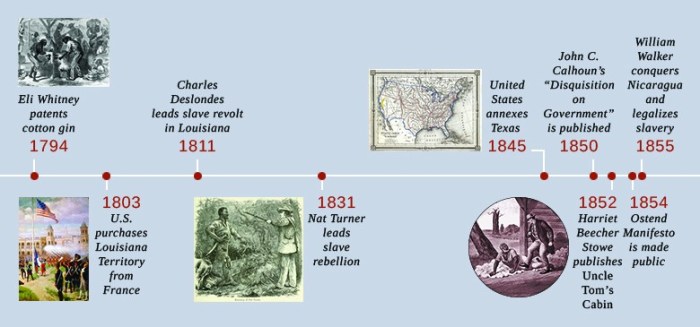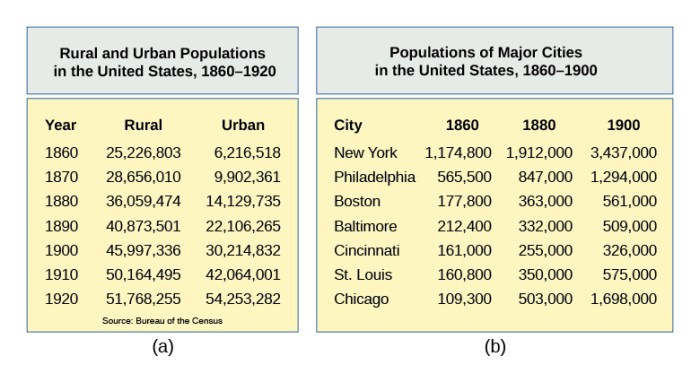The dramatic growth of American cities between 1800 and 1860 is a captivating chapter in the nation’s history, marked by transformative technological advancements, surging immigration, and profound social and economic shifts. This narrative delves into the factors that fueled this urban expansion, exploring its impact on the lives of countless individuals and the development of American society.
Fueled by the Industrial Revolution, cities became magnets for workers seeking employment in factories and transportation hubs. The influx of immigrants from diverse backgrounds brought new cultures and perspectives to urban centers, shaping their social fabric and cultural landscape.
The Dramatic Growth of American Cities between 1800 and 1860
The period between 1800 and 1860 witnessed an unprecedented surge in the urbanization of the United States. This transformation was driven by a confluence of factors, including the Industrial Revolution, mass immigration, and advancements in urban planning and infrastructure. These developments profoundly reshaped the social, economic, and cultural landscape of the nation.
The Industrial Revolution’s Impact

The Industrial Revolution played a pivotal role in the growth of American cities. Technological advancements, such as the steam engine, mechanized manufacturing, and improved transportation, fueled the establishment of factories and industries in urban centers. These factories offered employment opportunities, attracting workers from rural areas to cities in search of better livelihoods.
Transportation Innovations, The dramatic growth of american cities between 1800 and 1860
- Steamboats revolutionized transportation along rivers and lakes, enabling the efficient movement of goods and people.
- Canals, such as the Erie Canal, connected major waterways, facilitating trade and the expansion of markets.
- Railroads emerged as a rapid and reliable means of transporting both passengers and freight, further connecting cities and expanding their reach.
Immigration and Urbanization

The influx of immigrants to the United States during this period was another significant factor in the growth of cities. Between 1820 and 1860, over 5 million immigrants arrived in the United States, primarily from Ireland, Germany, and other European countries.
Push and Pull Factors
- Push factors:Economic hardship, political instability, and religious persecution in Europe drove people to seek a better life in America.
- Pull factors:The availability of jobs, land, and political freedom in the United States attracted immigrants.
Immigrant Communities
Immigrants often settled in ethnic enclaves within cities, creating vibrant and distinct communities. These communities preserved their cultural traditions, established their own businesses, and contributed to the cultural fabric of American cities.
Urban Planning and Infrastructure
The rapid population growth in cities posed significant challenges for urban planners. They had to address issues related to housing, sanitation, and transportation.
Housing
Cities implemented building codes and zoning laws to ensure adequate housing and prevent overcrowding. They also encouraged the construction of multi-family dwellings, such as tenement buildings.
Sanitation
Cities invested in sewer systems and water filtration plants to improve sanitation and reduce the spread of disease. They also established sanitation departments to collect and dispose of waste.
Transportation
The development of streetcars and omnibus lines improved public transportation within cities, making it easier for residents to commute to work and access amenities.
Social and Economic Transformations

Urbanization led to significant social and economic changes.
Social Class and Occupation
Cities fostered the emergence of a more diverse social class structure, with the growth of both wealthy industrialists and a working class employed in factories and other urban industries.
Family Life and Gender Roles
Urbanization disrupted traditional family structures. Women increasingly entered the workforce, and families often relied on extended networks for support.
Economic Opportunities and Challenges
Cities offered economic opportunities for many, but they also presented challenges such as poverty, crime, and labor exploitation.
Cultural and Intellectual Developments

Cities became centers of cultural and intellectual activity.
Art and Entertainment
Cities fostered the development of new art forms, such as realism and the Hudson River School. They also became hubs for entertainment, with the rise of theaters, concert halls, and museums.
Education and Intellectual Exchange
Cities established universities, libraries, and other institutions of higher learning. They became centers for the exchange of ideas and the advancement of knowledge.
Urban Culture
Urban culture influenced American society as a whole, shaping values, beliefs, and artistic expression.
Top FAQs
What were the major factors that contributed to the growth of American cities between 1800 and 1860?
The Industrial Revolution, immigration, and advancements in transportation and infrastructure were key drivers of urban growth during this period.
How did immigration impact the social and cultural fabric of American cities?
Immigrants brought diverse cultures, languages, and traditions to urban centers, enriching their social fabric and contributing to the development of new cultural forms.
What were some of the challenges faced by cities as they experienced rapid growth?
Cities faced challenges in providing adequate housing, sanitation, and transportation for their growing populations, leading to overcrowding, slums, and health issues.